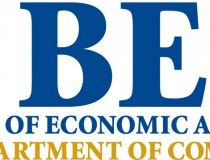What’s Form BE-10?
Most know June 30th as the deadline for filing FBARs or Foreign Bank Accounts – http://techno-sites.com/darren/2014/11/25/fbars-and-form-8938/
But this year there’s a new kid on the block and that’s Form BE-10.
What’s Form BE-10?
It is not a tax form. The BE-10 is a Benchmark Survey from the Bureau of Economic Analysis (BEA) under the U.S. Department of Commerce. The BE-10 is conducted every five years and is meant to cover all U.S. direct investment abroad from both large and small companies; it’s related to the annual BE-11 Survey of Large Companies. According to the rules, the BE-10 treats people as “companies” and is required for even the smallest economic activity abroad by an individual — for instance, the BEA expects you to report if your small apartment in Trinidad generates $5,000 in income each year.
What’s the purpose?
A number of federal statistical reporting requirements apply to U.S. companies that
– Make investments abroad,
– Are the beneficiaries of foreign direct investment, or
– Otherwise engage in certain cross-border transactions.
Two reporting regimes that have been around for decades but have gained more prominent attention in the last few years—and especially in the last year—involve BEA and TIC reports. The U.S. Department of Commerce, through the BEA, and the U.S. Department of the Treasury (“Treasury”), through its Treasury International Capital (“TIC”) reporting system (which is administered by the Federal Reserve Bank of New York), collect data on cross-border portfolio investment flows and positions between U.S. residents and foreign residents. The BEA’s forms generally divide into two groups: “U.S. Direct Investment Abroad” (of which the BE-10 is part and which had its first benchmark survey for the year 1982) and “Foreign Direct Investment in the United States.”
The point of the BEA and TIC forms is to compile information regarding the U.S. balance of payments and to formulate international financial and monetary policies, among other things. Importantly, these forms are not tax filings or other filings that must be made to secure regulatory approvals or consents relating to a particular transaction. The BEA and Treasury collect the data pursuant to the International Investment and Trade in Survey Act of 1977 (the “Survey Act”), and they may only use collected data for analytical and statistical purposes, not for purposes of regulation, investigation, or taxation. Copies retained in a filer’s files are immune from legal process.
Under the Survey Act and related regulations, filings are accorded confidential treatment, with the information that is generated in survey and statistical reports being made available to the public on an aggregated basis. Without the permission of a filer, the information filed in BEA and TIC reports cannot be presented in a manner that allows a filer to be individually identified. Government employees with access to the information submitted by filers are subject to penalties for unauthorized disclosure.
Why hasn’t it come up before?
Most BEA surveys are only required to be filed by companies contacted by the BEA. Until recently, that included the BE-10. However on Nov. 20, 2014, the Bureau of Economic Analysis published a rule in the Federal Register indicating that the change occurred at that point: Under “Description of Changes”, the rule states: “Under the revised regulations, unlike many other BEA surveys conducted pursuant to the Act, persons subject to the reporting requirements of the BE-10, Survey of U.S. Direct Investment Abroad, are required to respond whether or not they are contacted by BEA.”
You would have known if you read the Federal Register, which is considered a legal notice to U.S. business enterprises (people, too) of their obligation to report.
Penalties?
The failure to furnish the information required by the forms may result in a filer being subject to monetary penalties of between $2,500 and $25,000, as well as injunctive relief requiring a filer to comply with the filing requirements. Additional penalties apply for willful violations – if you willfully fail to file (meaning essentially you know that you have an obligation to file the BE-10 and you don’t), you may be fined another $10,000 and sentenced to up to one year in jail or both. In addition, any officer, director, employee, or agent of any corporation who knowingly participates in such violations may be subject to monetary and criminal penalties.
What do we need to do?
The U.S. Reporter must file a complete Form BE-10A if any one of the following three items of the fully consolidated U.S. domestic business enterprise was greater than $300 million (positive or negative) at any time during the Reporter’s 2014 fiscal year:
(1) Total assets,
(2) Sales or gross operating revenues excluding sales taxes, or
(3) Net income after provision for U.S. income taxes.
The U.S. Reporter must complete only items 1 through 42 and items 97 through 114 of Form BE-10A if no one of the three items listed above for the fully consolidated U.S. domestic business enterprise was greater than $300 million (positive or negative) at any time during the Reporter’s 2014 fiscal year.
Then there are forms that need to be filed in respect of each foreign affiliate. Following is a summary of what triggers a BE-10B, BE-10C, or BE-10D:
a. each majority-owned foreign affiliate for which any one of the Assets/Revenues/Net Income items was greater than $25 million (positive or negative), but for which no one of these items was greater than $80 million (positive or negative) at any time during the affiliate’s 2014 fiscal year;
b. each minority-owned foreign affiliate for which any one of the Assets/Revenues/Net Income items was greater than $25 million (positive or negative) at any time during the affiliate’s 2014 fiscal year; and each foreign affiliate for which no one of the Assets/Revenues/Net Income items was greater than $25 million (positive or negative) at any time during the affiliate’s 2014 fiscal year that is a foreign affiliate parent of another foreign affiliate being filed on BE-10B or BE-10C.
These forms generally ask for identifying information on the particular foreign affiliate, as well as on various financial and operating data matters, total number of employees and employee compensation data, infrastructure-related spending, research and development spending, debt and intercompany balances.
A U.S. person that has been contacted by BEA for filing the BE-10 must file a BE-10 Claim for Not Filing form if it does not meet the above filing requirements.
Does this impact all US Persons?
Who must report – A BE-10 report is required of any U.S. person that had a foreign affiliate – that is, that had direct or indirect ownership or control of at least 10 percent of the voting stock of an incorporated foreign business enterprise, or an equivalent interest in an unincorporated foreign business enterprise – at any time during the U.S. person’s 2014 fiscal year.
U.S. direct investment abroad means the ownership or control, directly or indirectly, by one U.S. person of 10 percent or more of the voting securities of an incorporated foreign business enterprise or an equivalent interest in an unincorporated foreign business enterprise, including a branch.
U.S. person means any person resident in the United States or subject to the jurisdiction of the United States.
U.S. Reporter means the U.S. person that has direct investment in a foreign business enterprise, including a branch. If the U.S. person is an incorporated business enterprise, the U.S. Reporter is the fully consolidated U.S. domestic enterprise.
Determining country of residence or jurisdiction of individuals – An individual is considered a resident of, and subject to the jurisdiction of, the country in which it is physically located, subject to the following qualifications:
1. Individuals who reside, or expect to reside, outside their country of citizenship for less than one year are considered to be residents of their country of citizenship,
2. Individuals who reside, or expect to reside, outside their country of citizenship for one year or more are considered to be residents of the country in which they are residing.
There are two exceptions to this rule:
a. Individuals (and their immediate families) who either own or are employed by a business in their country of citizenship and who are residing outside of that country for one year or more in order to conduct business for the enterprise are considered residents of their country of citizenship if they intend to return within a reasonable period of time.
b. Individuals who reside outside their country of citizenship because they are government employees (such as diplomats, consular officials, members of the armed forces, and their immediate families) are considered residents of their country of citizenship regardless of their length of stay.
References –
http://corpgov.law.harvard.edu/2015/06/06/what-you-need-to-know-on-form-be-10/
http://www.theyucatantimes.com/2015/06/expats-real-estate-owners-say-hello-to-form-be-10/
http://www.bea.gov/surveys/pdf/be10/BE-10%20Instructions.pdf






